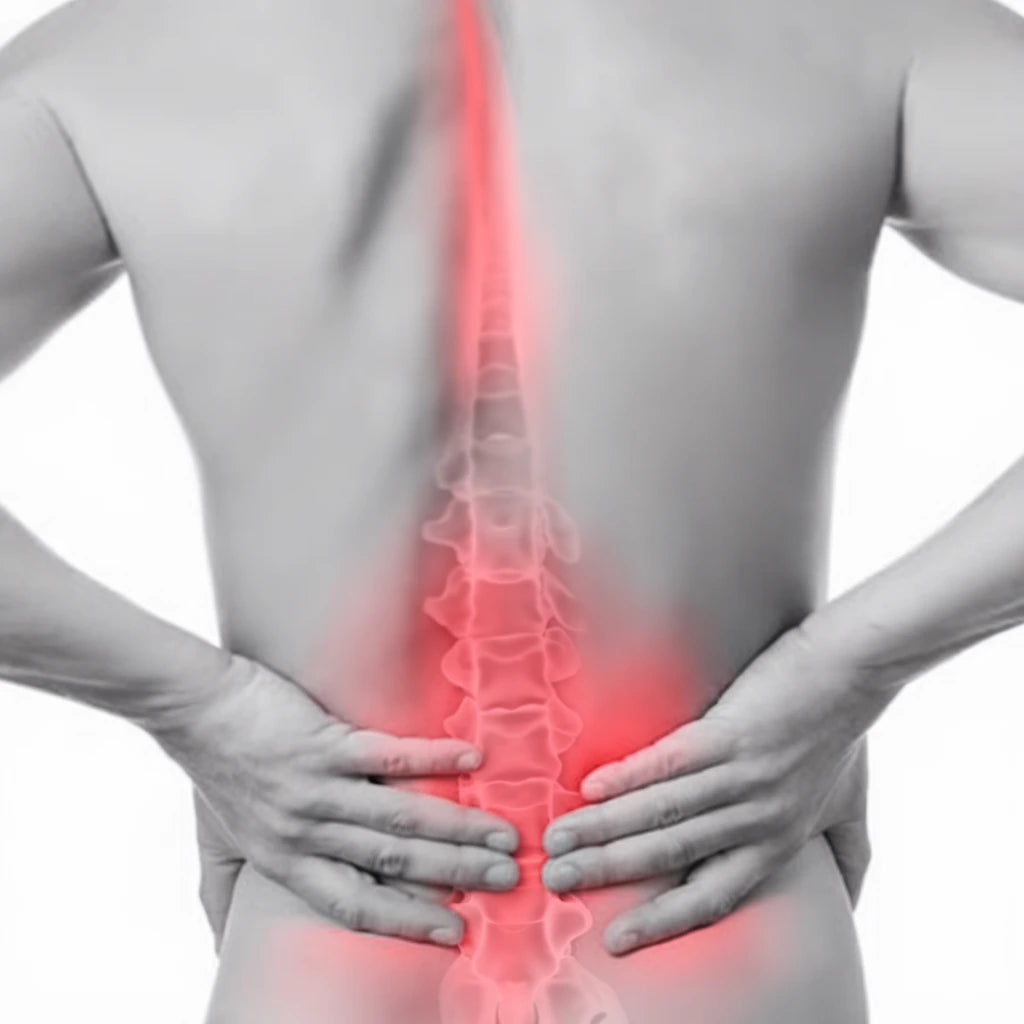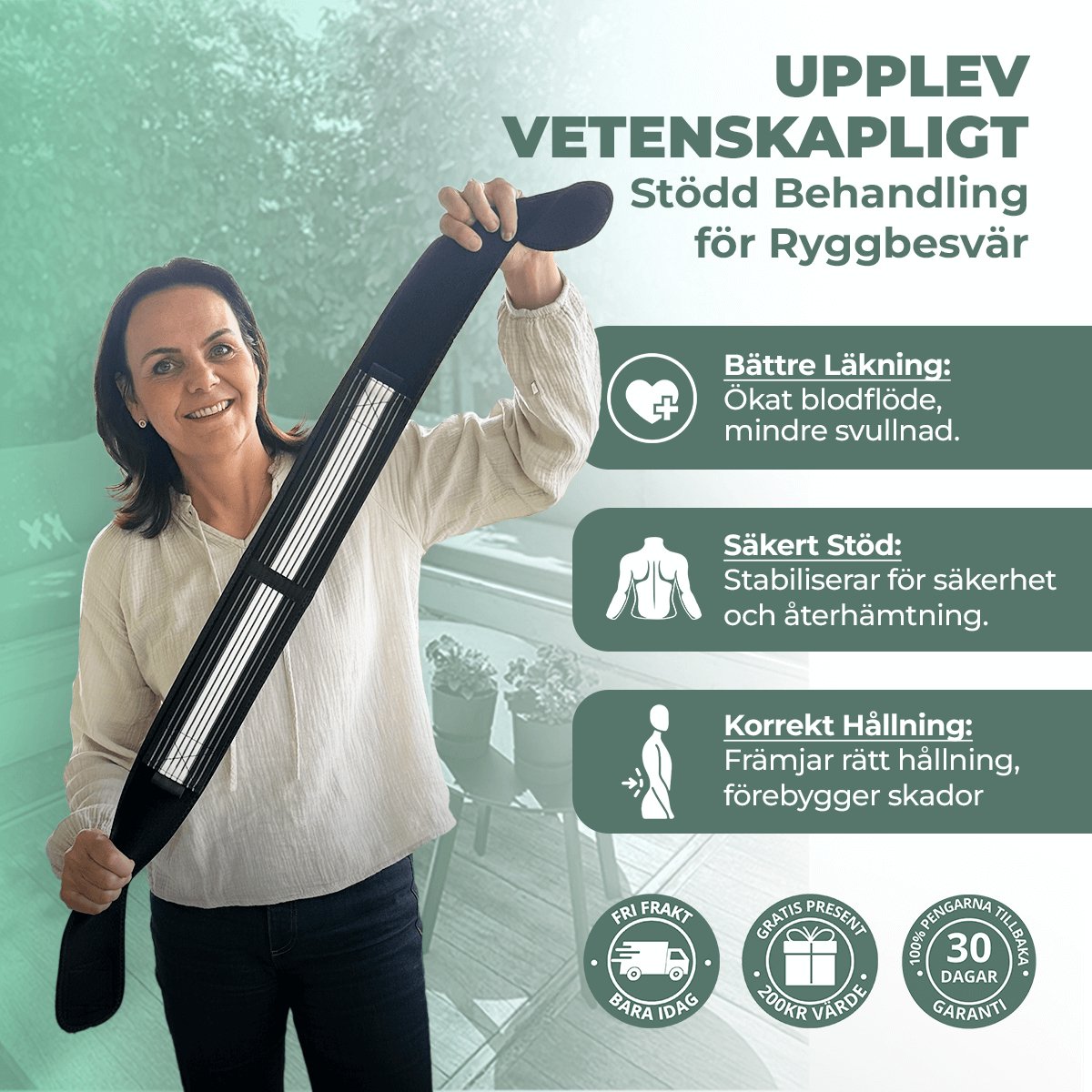Nerve Compression in the Back: Symptoms, Causes, and Treatment

Nerve compression in the back occurs when nerves in the spine are subjected to pressure, causing pain that often radiates to the arms or legs. This condition can significantly affect daily life through limited mobility and constant discomfort. This article provides an overview of how to recognize the symptoms, understand the underlying causes, and what treatment options are available to relieve discomfort and restore normal function.
What Is a Pinched Nerve in the Back?
A pinched nerve in the back means that a nerve is compressed, often due to a herniated disc or poor posture. This can lead to radiating pain, numbness, and weakness in the legs. Early diagnosis and treatment are crucial for alleviating discomfort.
Symptoms of Pinched Nerves in the Back
Common symptoms include:
- Pain radiating from the back down into the legs
- Numbness and tingling in the affected area
- Muscle weakness
- Decreased sensation
- Increased pain with certain movements or positions
Symptoms of a pinched nerve in the back can vary depending on which nerve is affected and where in the back the problem occurs. Patients often describe the pain as sharp, burning, or tingling that radiates along the path of the nerve. Sometimes you may also experience decreased sensation or difficulty moving certain parts of your body. In the neck, a pinched nerve can cause symptoms that radiate into the arms, while issues in the lower back often affect the legs.
Causes of Pinched Nerves in the Back
Several factors can contribute to nerve compression in the back:
- Herniated discs
- Narrowing of the spinal canal (spinal stenosis)
- Osteoarthritis of the spine
- Overuse or poor posture
- Injuries or trauma to the back
A pinched nerve in your back can occur at any age but is more common among older adults as wear and tear on spinal structures increases with age. In younger individuals, it is often herniated discs or injuries from sports or accidents that are to blame. Prolonged sitting, poor posture, and repetitive movements can also contribute to nerve roots being compressed between vertebrae or other structures in your back.
Diagnosis and Treatment of Nerve Compression
| Diagnostic method | Treatment options | Benefits of BackComfort™ |
|---|---|---|
| Physical examination | Rest and pain relief | Provides support and stability |
| MRI or CT scan | Physiotherapy and exercises | Improves posture |
| Nerve conduction test | Anti-inflammatory drugs | May reduce the need for medication |
| Ultrasound | Cortisone injections | Complements other treatments |

How RyggKomforten™ Can Help with Pinched Nerves in the Back
RyggKomforten™ offers several benefits for individuals with pinched nerves in the back:
- Provides support and stability to the spine
- Improves posture and reduces strain on the nerves
- Helps alleviate pain and discomfort during daily activities
- Can be used as a complement to other treatment methods
- Contributes to faster recovery and reduced risk of relapse
For many with a pinched nerve in the back, shoulders, or other areas of the back, RyggKomforten™ can provide immediate improvement by relieving pressure and offering support. It allows muscles to relax and reduces pressure on the nerves. The product is designed to accommodate various types of back issues and can be adjusted according to individual needs.
Buy nowConclusion
Nerve compression in the back can be a painful and limiting condition, but with the right diagnosis and treatment, most individuals can experience significant improvements. By combining medical treatments, physical therapy, and the use of supportive aids like RyggKomforten™, many can effectively manage their symptoms and enhance their quality of life. It is important to consult a doctor for an accurate diagnosis and personalized treatment plan.
Frequently Asked Questions (FAQ)
How long does a pinched nerve in the back last?
The duration varies, but with the right treatment, many can experience improvement within a few weeks to months.
Can I exercise with a pinched nerve in my back?
Light exercise and specific workouts can often be beneficial, but consult with a physiotherapist for a tailored program.
How quickly can I expect results with RyggKomforten™?
Many experience immediate relief, but full effect may take a few days to weeks of regular use.
Can RyggKomforten™ prevent nerve compression in the back?
Yes, by providing support and improving posture, RyggKomforten™ can help prevent strain and reduce the risk of nerve compression.
When should I seek emergency medical care for a pinched nerve in my back?
Seek immediate care if you experience sudden, severe pain, loss of bladder or bowel control, or significant weakness in the legs.
